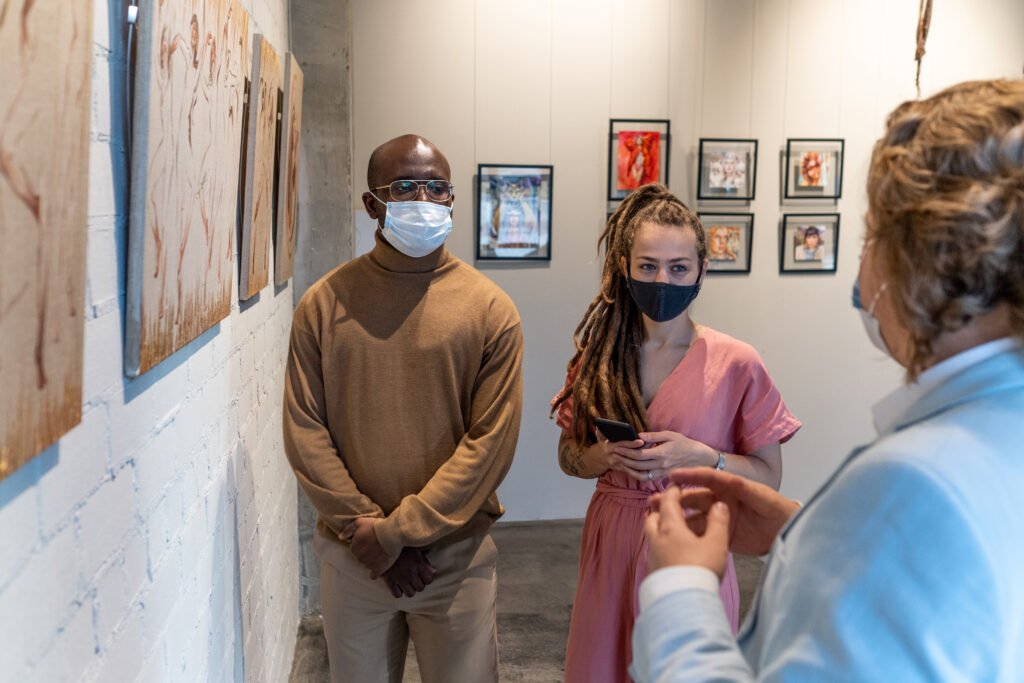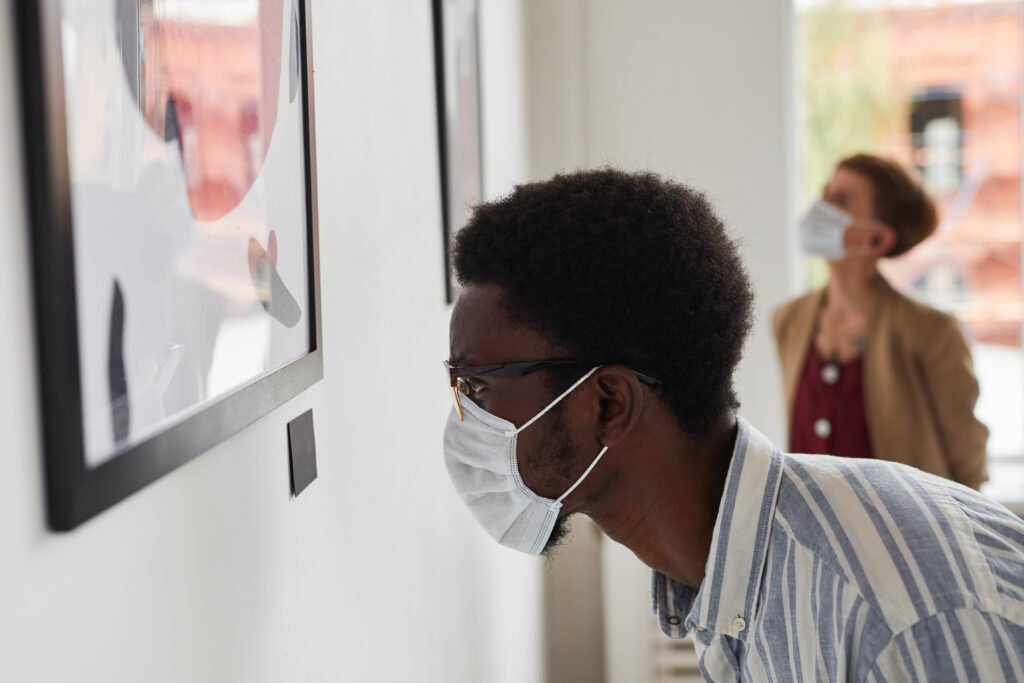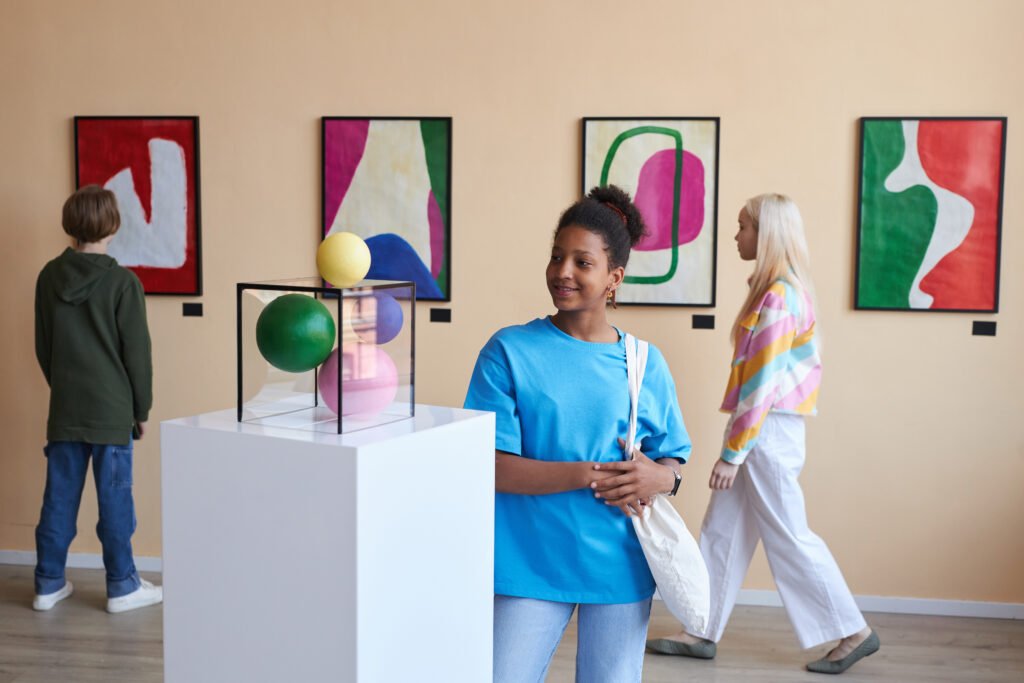The Covid-19 pandemic brought about deep transformations in various sectors, and the art market was no exception. With galleries closed and exhibitions postponed, the art world faced unprecedented uncertainty. However, the post-pandemic art market has emerged with new dynamics, opportunities, and digital strategies.
What initially seemed like a cultural collapse became a period of innovation. Artists, collectors, and institutions adapted, redefining how people buy art — particularly online. In this article, we explore what changed, especially regarding abstract art and consumer behavior.
The Digital Turn in the Face of Crisis
In 2020, the Art Basel & UBS Global Art Market Report recorded a 22% drop in global art sales. Yet, it also revealed a promising sign: online sales more than doubled, reaching 25% of total transactions — a historic leap.
The digital shift included virtual exhibitions, online auctions, and immersive experiences. Platforms like Artsy, Artnet, and Saatchi Art became some of the best places to buy art, making the market more accessible and global.
In addition, tools like augmented reality and blockchain provided safer and more interactive experiences. NFT-based authentication became especially relevant among contemporary artists and collectors.
Post-Pandemic Trends in the Art World
Several trends are now shaping the post-pandemic art market. One of the most notable is the growing value of local artists and emotionally charged works. Abstract art stands out for its visual strength and versatility in home environments — something highly appreciated during and after lockdowns.
According to University of Oxford – Cultural Engagement Research, interest in art for home decoration rose by 40% during the pandemic, especially among first-time buyers. This opened the market to a new generation of collectors, more focused on personal taste and emotional resonance than institutional prestige.

Millennials and Gen Z buyers also gained prominence. More comfortable in digital environments, they prioritize online art purchases and value meaningful pieces — often favoring abstract and identity-based art.
Hybrid fairs — combining physical and digital components — also became more common. SP-Arte, one of the biggest art events in Latin America, successfully hosted a digital edition in 2021 with more than 150 galleries and thousands of online visitors.
The Future: Innovation, Decentralization, and Diversity
Experts like Magnus Resch, author of How to Become a Successful Artist (2021), argue that the future of the art market lies in decentralization, broader access, and less reliance on traditional auction houses. Digital platforms and social media now allow artists to sell directly to collectors, removing intermediaries.
The idea of the collector as an investor is also gaining ground. According to Deloitte’s Art & Finance report, 85% of art collectors now consider their purchases as strategic investments. Abstract and contemporary works, in particular, are seen as stable assets with long-term appreciation.
Artificial intelligence is expected to play a growing role in curating and forecasting trends. Platforms like Artprice already use algorithms to analyze auction data and predict an artist’s potential market rise.
Finally, the post-pandemic art market is moving toward greater cultural diversity. Underrepresented voices — including women, indigenous artists, LGBTQIAP+ creatives, and Afro-descendants — are gaining visibility and market value. For those looking to buy art that reflects both quality and purpose, this is a promising direction.



